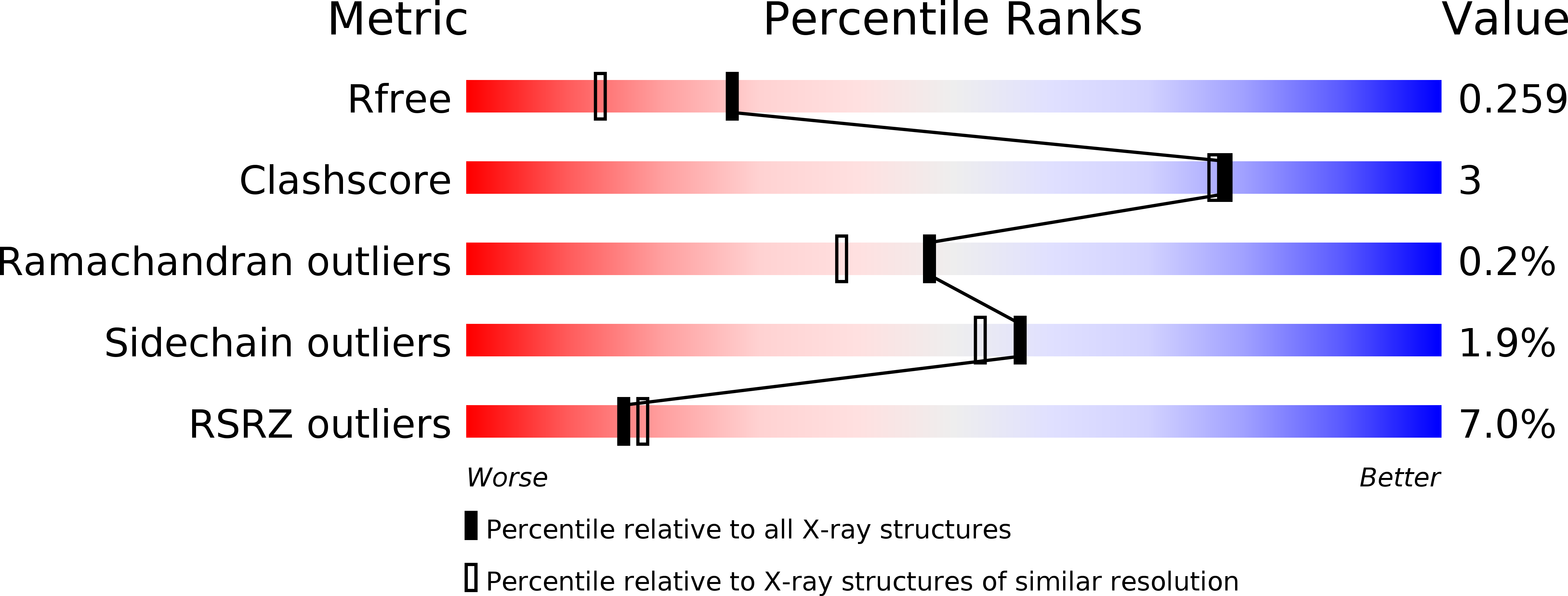
Deposition Date
2018-12-10
Release Date
2019-07-10
Last Version Date
2024-01-24
Entry Detail
PDB ID:
6Q6B
Keywords:
Title:
Structure of the copper storage protein, Ccsp, from Streptomyces lividans loaded with 10 copper equivalents
Biological Source:
Source Organism:
Streptomyces lividans 1326 (Taxon ID: 1200984)
Host Organism:
Method Details:
Experimental Method:
Resolution:
1.90 Å
R-Value Free:
0.25
R-Value Work:
0.21
R-Value Observed:
0.21
Space Group:
P 61 2 2


